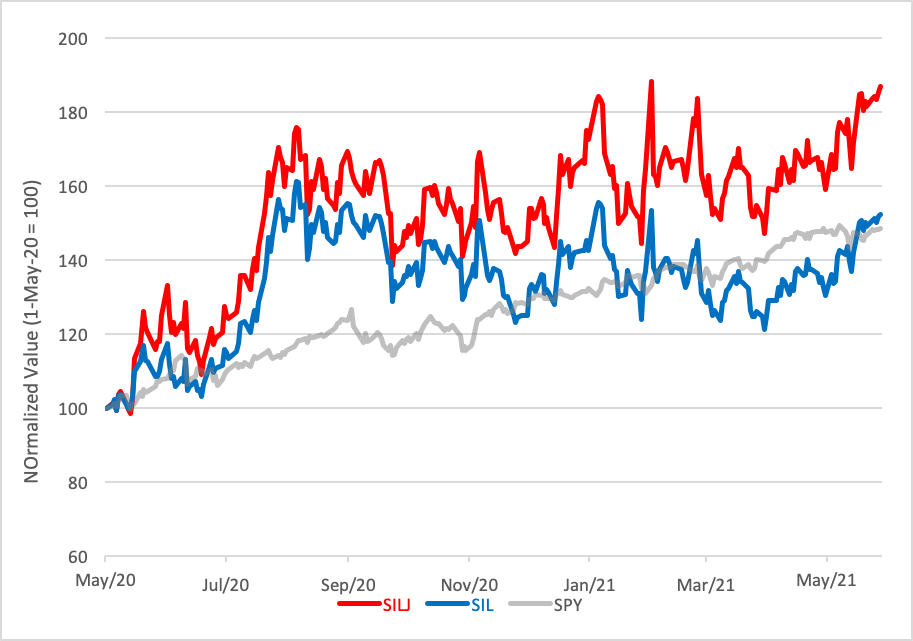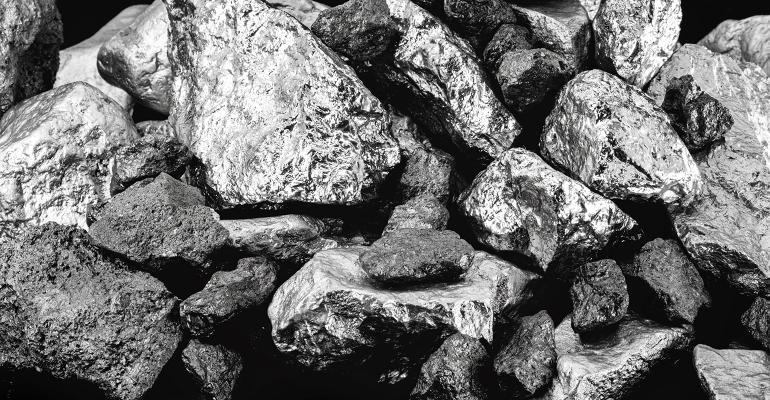Nostalgia sometimes overtakes old guys like me. And by “old,” I mean folks who graduated high school before 2005. If you’re in that cohort, think back to your SAT exam. Remember those analogy questions? Well, here’s a contemporary version:
“_____ is to SIL as GDXJ is to GDX.”
The correct answer is “SILJ,” the ETFMG Prime Junior Silver Miners ETF, a portfolio of 49 mining outfits with a small-cap tilt. It’s a little brother (albeit from another mother) to the Global X Silver Miners ETF (SIL), much in the same way the VanEck Vectors Junior Gold Miners ETF (GDXJ) is the sibling of the older VanEck Vectors Gold Miners ETF (GDX).
Perhaps the word “little” is a poor descriptor for the SILJ portfolio. True, SILJ is two years younger than the Global X fund, but it’s fast catching up in size. SILJ has topped $1 billion in assets, giving it more than two-thirds the market capitalization of SIL. As for trading volume, well, on that score li’l bro has jumped far ahead, trading more than 1.5 million shares daily. That’s better than 1.5 times SIL’s average daily volume.
And what do investors get for all that activity? Excess return, for one thing. Over the past year, SILJ has shot up nearly 87%, far outpacing the 52% gain for the SIL portfolio. There’s a little extra volatility that comes with that outperformance but not enough to knock the edge off its risk-adjusted return. Take a look at how the silver miner ETFs fared against the investable proxy for the S&P 500, the SPDR S&P 500 ETF (SPY):
Silver Miner ETF Performance (1-May-2020 to 28-May-2021)


So, what accounts for the uptick in silver miners? Like most any commodity business, it’s a supply-and-demand issue. According to Stephen Gardner, ETFMG’s sales director, industrial demand for silver is being driven upward by the Biden administration’s push for green energy. Silver is the most electrically conductive of all metals and is a core element in the manufacture of solar panels. Biden’s policy, says Gardner, calls for “a huge increase in solar fields.”
“This all comes after five years of declining global supply from mines,” adds Gardner. “The decline accelerated during COVID when a lot of the mines were shut down. It sets up for a pretty positive situation in the silver market.”
Silver’s price, just like gold’s, can be driven by inflation fears. Overall, though, the salutary effect on silver has been greater than on gold as evidenced by a 40% decline in the gold/silver ratio since May 2020. Silver has appreciated at a much faster pace than gold.
Compared with SIL, the junior miners fund is presently delivering more bang for the buck, despite the fact that many of the same stocks are held in both portfolios. In fact, 22 of SIL’s 40 constituents are also components of SILJ. The difference is in their weighting. The Global X ETF is market cap-weighted, making large stocks dominant. Large caps make up 31% of SILJ’s heft, with only 30% weighted in small caps. There’s no large-cap exposure in ETFMG’s fund; small caps account for 54% of its capitalization and the balance given over to mid caps.
SILJ, too, overweights those mining stocks with greater exposure to silver. Silver is most often a byproduct of gold or copper mining. Those companies that derive 50% or more of their revenue from silver mining activities are deemed “pure plays” in the SILJ index methodology and bucketed in the portfolio’s top tier.
SILJ’s weighting scheme has allowed the fund to keep pace with and exceed silver’s rise this past year while SIL has lagged. That’s a two-edged sword, though. Before, when mining was in a slump, SILJ suffered most.
“Silver miners offer a levered play versus bullion,” says ETFMG’s Gardner. “They have a fixed cost of extracting the metal, so every dollar that silver moves higher goes directly to the companies’ bottom lines.” Gardner’s quick to add that “it works in reverse when the price of silver is falling.”
Despite the sanguine outlook for silver, Gardner doesn’t believe investors should oust gold or gold miners from their precious metals allocation.
“Typically,” he says, “when precious metals rally, silver tends to outperform. If you look back at the last precious metal bull market following the 2008 financial crisis, silver outperformed gold pretty significantly. But I don't think that you should own one over the other. I think there's room in the portfolio for both metals.”
Ultimately, the decision to own metals or miners, whether it’s gold and/or silver, is a very personal one. “I think this applies to all ETFs,” says Gardner, “and really, all investments: It’s knowing what you own. I mean looking through the prospectus and seeing what the investable universe is and what the intention of the ETF is. If that aligns with what you're trying to achieve within your portfolio, then it's worthwhile to go ahead. It's very cliché but it's very important.”
Brad Zigler is WealthManagement's alternative investments editor. Previously, he was the head of marketing, research and education for the Pacific Exchange's (now NYSE Arca) option market and the iShares complex of exchange traded funds.





